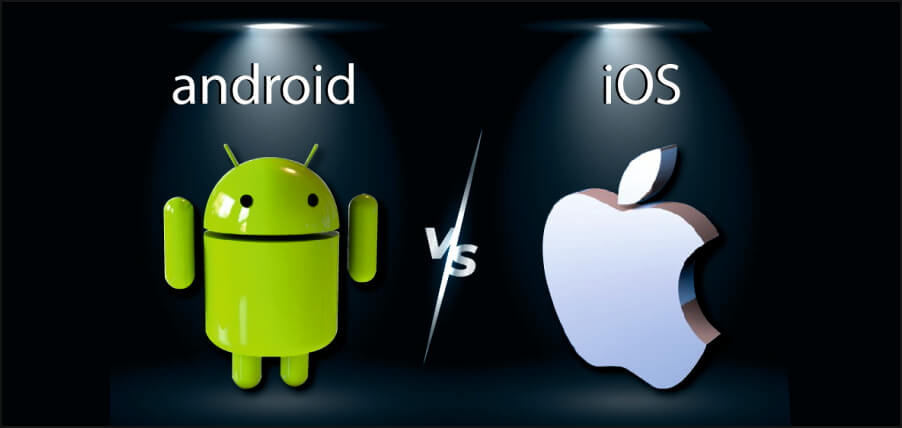Android vs. iOS: Brand Loyalty and Switching Costs – the age-old debate continues. Choosing between these mobile operating systems is more than just picking a phone; it’s a decision about the entire ecosystem, the apps, the security, and even the way you interact with technology.
When investigating detailed guidance, check out Android vs. iOS: Which is Better for Photography? now.
This choice often comes down to brand loyalty, a powerful force that can make switching platforms feel like a daunting task. But what exactly are the switching costs, and how do they impact the dynamic landscape of the mobile market?
This article delves into the complexities of brand loyalty and switching costs in the context of Android and iOS. We’ll explore the factors that drive user preference, the hurdles users face when considering a change, and the broader implications for the mobile operating system market.
By understanding these dynamics, we can gain valuable insights into the future of mobile technology and the evolving relationship between users and their devices.
Brand Loyalty: An Overview
Brand loyalty is a crucial aspect of the mobile operating system (OS) market, where users often develop strong preferences for either Android or iOS. This loyalty stems from a combination of factors, including user experience, app ecosystems, and security features.
The Concept of Brand Loyalty in Mobile Operating Systems

Brand loyalty in the context of mobile OS refers to the tendency of users to repeatedly choose and favor a particular platform over others. This preference can be driven by various factors, such as familiarity, satisfaction with the user interface, and the availability of desired apps.
Factors Contributing to Brand Loyalty in the Tech Industry
Several factors contribute to brand loyalty in the tech industry, particularly for Android and iOS. These include:
- User Experience:Both Android and iOS offer distinct user experiences. Android emphasizes customization and flexibility, while iOS focuses on simplicity and a streamlined interface. These differences appeal to specific user preferences.
- App Ecosystems:The availability of a wide range of high-quality apps is a major driver of brand loyalty. Android and iOS boast extensive app stores, offering diverse applications for various needs. The strength of these ecosystems influences user choice.
- Security Features:Security is a paramount concern for mobile users. Both Android and iOS have implemented robust security measures, but their approaches differ. Users often choose platforms based on their perceived security levels.
Examples of Brand Loyalty in Android and iOS Ecosystems, Android vs. iOS: Brand Loyalty and Switching Costs
Brand loyalty manifests in various ways within the Android and iOS ecosystems. For example:
- Android:Users may choose Android for its open-source nature, which allows for greater customization and flexibility. They might also appreciate the wider range of hardware options available.
- iOS:Users often gravitate towards iOS for its seamless integration with other Apple devices, intuitive interface, and strong focus on privacy.
Factors Influencing Brand Loyalty: Android Vs. IOS: Brand Loyalty And Switching Costs
The decision to choose Android or iOS is influenced by several key factors, including:
User Experience, App Ecosystems, and Security Features
- User Experience:The user experience encompasses the overall feel and functionality of the OS. Android prioritizes customization, allowing users to personalize their devices. iOS focuses on simplicity and a streamlined interface, making it easier for new users to adapt.
- App Ecosystems:The availability of a wide range of high-quality apps is crucial for user satisfaction. Both Android and iOS boast extensive app stores, but their app selection and availability can vary. The strength of these ecosystems significantly influences user choice.
- Security Features:Security is a top priority for mobile users. Android and iOS have implemented robust security measures, but their approaches differ. For example, Android’s open-source nature allows for more flexibility in customization, but it also introduces potential security vulnerabilities. iOS’s closed ecosystem provides a more controlled environment, prioritizing security.
Browse the implementation of Android vs. iOS: Security and Privacy in real-world situations to understand its applications.
User Interface Design, App Availability, and Hardware Compatibility
- User Interface Design:The user interface (UI) plays a crucial role in user experience. Android’s UI is known for its customization options, while iOS’s UI is known for its simplicity and ease of use. User preferences for UI design can significantly influence their platform choice.
Find out about how The Role of Software in Battery Optimization can deliver the best answers for your issues.
- App Availability:The availability of desired apps is a key factor for many users. Both Android and iOS have extensive app stores, but the availability of specific apps can vary. Users often choose the platform that offers the apps they need or prefer.
- Hardware Compatibility:Android’s open-source nature allows for a wide range of hardware options, providing users with more choices. iOS is primarily tied to Apple’s hardware, offering a more integrated experience but limiting user choice.
Switching Costs: An Examination
Switching costs are a significant factor in the mobile OS market, as users may face various challenges and expenses when transitioning between Android and iOS.
Discover more by delving into Analyzing Battery Life Test Results further.
The Concept of Switching Costs in Mobile Operating Systems
Switching costs in the context of mobile OS refer to the expenses, effort, and potential losses incurred by users when changing from one platform to another. These costs can be financial, time-consuming, and data-related.
Financial, Time, and Data Migration Costs
- Financial Costs:Switching from Android to iOS often involves purchasing a new Apple device, which can be a significant financial investment. Users may also need to purchase new apps or subscriptions, as not all apps are available on both platforms.
- Time Costs:Switching between platforms requires time to learn a new operating system, set up new accounts, and transfer data. This process can be time-consuming and disruptive, especially for users with extensive data and app libraries.
- Data Migration Costs:Transferring data, such as contacts, photos, and documents, between platforms can be challenging. Users may need to use specific data migration tools or manually transfer files, which can be time-consuming and error-prone.
Obtain recommendations related to Android vs. iOS: Which is Better for Gaming? that can assist you today.
Switching Costs and Brand Loyalty
Switching costs play a significant role in maintaining brand loyalty in the mobile OS market.
High Switching Costs and User Retention
High switching costs can act as a barrier to users switching platforms, contributing to user retention and brand loyalty. When users perceive significant costs associated with switching, they are more likely to stay with their current platform, even if they are not entirely satisfied.
Examples of Switching Costs as a Barrier
- Data Loss:Users may be hesitant to switch platforms due to concerns about losing data, especially if they have a large amount of personal information stored on their device.
- App Compatibility:Not all apps are available on both Android and iOS. Users may be reluctant to switch platforms if they rely on specific apps that are not available on the alternative platform.
- Learning Curve:Switching platforms requires learning a new operating system, which can be a significant time investment. Users may be hesitant to switch if they are comfortable with their current platform and do not want to invest the time to learn a new one.
Brand Loyalty and Market Dynamics
Brand loyalty and switching costs significantly influence the market share dynamics of Android and iOS.
Market Share Dynamics and Brand Loyalty
The market share of Android and iOS is constantly evolving, influenced by factors such as brand loyalty, switching costs, and the introduction of new features and devices. Users who are loyal to a particular platform are less likely to switch, contributing to the market share of their preferred OS.
Impact of Brand Loyalty on Innovation
Brand loyalty can also impact the development and innovation of mobile operating systems. When users are loyal to a platform, developers are more likely to focus on creating apps and features that cater to their needs and preferences. This can lead to a cycle of innovation and user satisfaction, further reinforcing brand loyalty.
Strategies for Maintaining Brand Loyalty
Both Android and iOS developers employ strategies to maintain and strengthen brand loyalty. These strategies include:
- Continuous Innovation:Regularly introducing new features and improvements to the operating system can keep users engaged and loyal. This includes enhancing existing features, adding new functionalities, and improving performance.
- Strong App Ecosystems:Maintaining a robust app ecosystem with a wide selection of high-quality apps is crucial for attracting and retaining users. Developers focus on attracting popular apps and supporting independent developers to create a diverse app library.
- Security and Privacy:Prioritizing security and privacy is essential for building trust and loyalty among users. This involves implementing robust security measures, protecting user data, and being transparent about privacy policies.
User Perspectives: Insights and Experiences
Anecdotal stories and experiences of users who have switched between Android and iOS provide valuable insights into the motivations and challenges associated with platform changes.
When investigating detailed guidance, check out Android vs. iOS: A Comprehensive Comparison now.
Motivations and Challenges of Switching
- Motivations:Users may switch platforms for various reasons, such as wanting a new experience, seeking better app availability, or desiring a more integrated ecosystem. Some users may switch due to dissatisfaction with their current platform, while others may simply be curious to explore alternatives.
Find out about how The Importance of Battery Safety can deliver the best answers for your issues.
- Challenges:Switching between platforms can be challenging due to factors such as data migration, app compatibility, and the learning curve associated with a new operating system. Users may face difficulties transferring data, finding alternative apps, and adapting to a new interface.
Impact of Switching Costs on User Satisfaction
Switching costs can significantly impact user satisfaction. Users who experience high switching costs may feel frustrated and dissatisfied, especially if they are not entirely satisfied with their new platform. Conversely, users who experience a smooth and efficient switching process may be more likely to be satisfied with their new platform.
Future Trends and Implications
Predicting future trends in brand loyalty and switching costs for Android and iOS is challenging, but several factors suggest potential developments.
Emerging Technologies and Market Trends
- Artificial Intelligence (AI):AI is rapidly evolving, and its integration into mobile operating systems is expected to enhance user experiences and create new opportunities for innovation. AI-powered features could lead to increased personalization, improved security, and more intuitive interactions, potentially influencing brand loyalty.
- Internet of Things (IoT):The growing adoption of IoT devices is creating a connected ecosystem where mobile operating systems play a central role. Users may choose platforms that offer seamless integration with their IoT devices, potentially leading to increased brand loyalty.
- 5G Connectivity:The rollout of 5G networks is expected to revolutionize mobile experiences, enabling faster speeds, lower latency, and enhanced capabilities. This could lead to increased competition between Android and iOS, as both platforms strive to offer the best 5G experiences, potentially impacting brand loyalty.
Implications for the Future of the Mobile Operating System Market
The future of the mobile operating system market is likely to be shaped by evolving technologies, changing user preferences, and the ongoing competition between Android and iOS. Brand loyalty and switching costs will continue to play significant roles, influencing user choices and driving innovation.
Final Review
The battle between Android and iOS is a fascinating microcosm of the tech industry. Brand loyalty plays a significant role, shaping user behavior and influencing market trends. While switching costs can create barriers, they also highlight the depth of commitment users have to their chosen platform.
Investigate the pros of accepting Android vs. iOS: Price and Value in your business strategies.
As technology continues to evolve, understanding these dynamics is crucial for both users and developers alike. The future of mobile operating systems will likely be shaped by the ongoing interplay of brand loyalty, switching costs, and the ever-changing landscape of user expectations.
Finish your research with information from OnePlus 12 Pro – Future Predictions.
FAQ Overview
What are some examples of brand loyalty in the mobile operating system market?
Understand how the union of How to Choose a Phone with the Right Battery for You can improve efficiency and productivity.
A common example is users staying within the Apple ecosystem, choosing iPhones, iPads, and Macs. Similarly, Android users might stick with Samsung or Google devices, taking advantage of integrated services and features.
How do switching costs affect user satisfaction?
High switching costs can lead to frustration, especially if users feel limited by their chosen platform. However, if users find value in their current ecosystem, they may be willing to accept these costs.
What are the future trends in brand loyalty and switching costs?
The rise of cross-platform services and the increasing importance of user data privacy could influence brand loyalty and switching costs. Users may become more flexible in their platform choices as these factors become more prominent.








